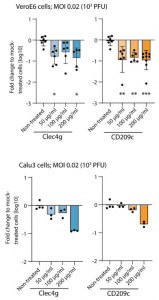HPA is not only a good tool as cancer marker, but also could be used for therapeutic applications
A group from Faculté de Pharmacie, Université Paul, Sabatier, Toulouse, France, etc has reported that Helix pomatia lectin (HPA) is not only a good tool as cancer marker, but could also be used for therapeutic applications.
https://www.ncbi.nlm.nih.gov/pmc/articles/PMC8431231/
Morniga G lectin and HPA lectin are know to have binding specificity to Tn-antigen. Authors demonstrated in the past that Morniga G can interact with Tn antigen present on Jurkat human leukemia, inducing tumor cell death but not death of Tn-negative healthy peripheral blood lymphocytes. However, very little information was known about the putative functional role of HPA-binding glycoproteins on tumor cells.
In this paper, authors have demonstrated for the first time that HPA induces cell death in human Jurkat T-cell leukemia and mouse EL4 T-cell lymphoma. In the mouse, HPA is clearly more toxic than Morniga G for EL4 cells. In addition, HPA appears to be non-toxic for healthy lymphocytes, suggesting that HPA could be used for therapeutic applications.








